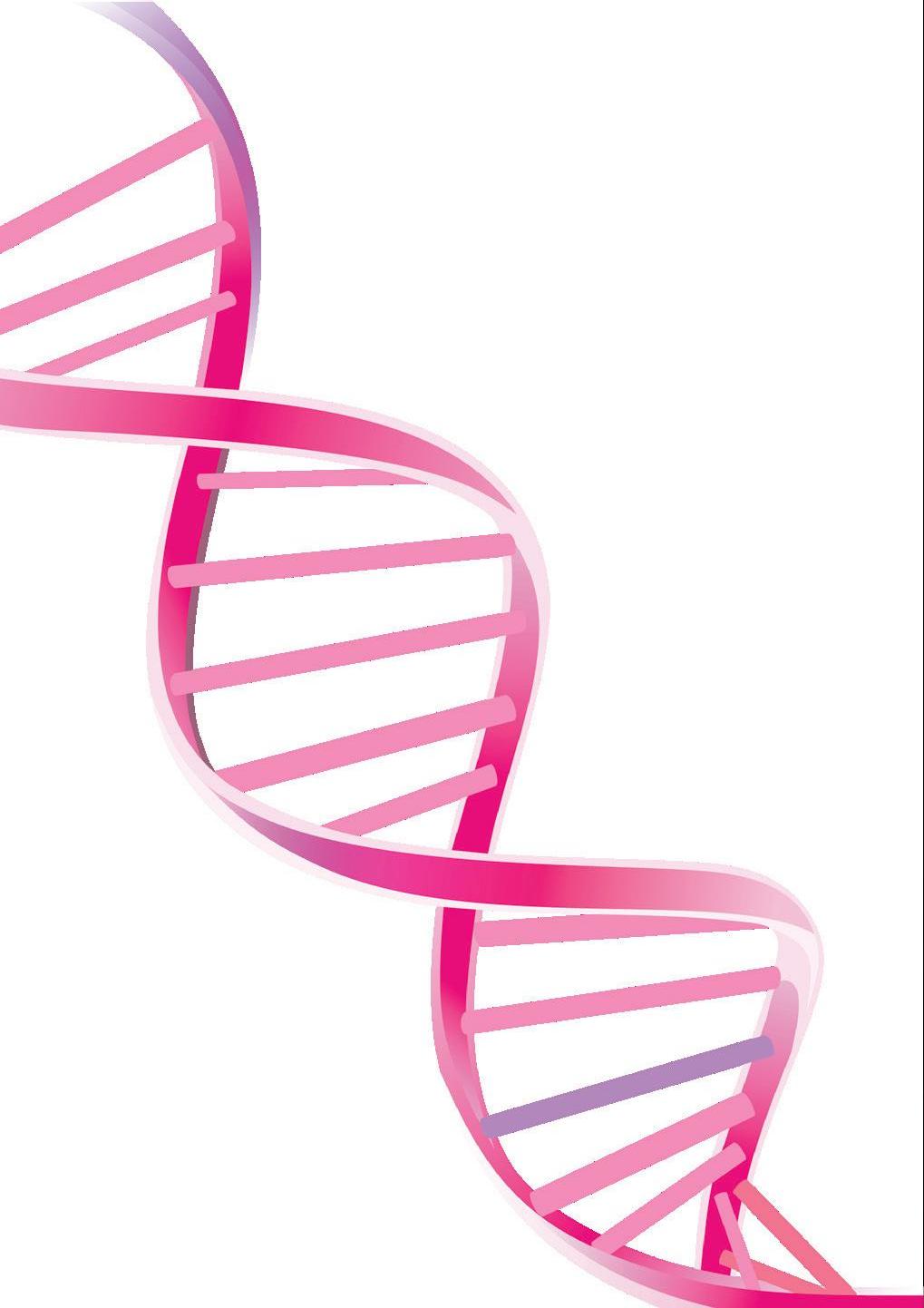PATIENT EDUCATION
Answers to common questions about the breast cancer gene ( how it can impact your family) By Christopher Shale, MD
Working with patients during breast reconstruction is both challenging and rewarding. Helping women deal
with a breast cancer diagnosis can be tough, but I’m continually inspired by their incredible strength and resolve. Breast cancer patients are often mothers, and invariably their thoughts turn to protecting their families. My patients often ask, “What does this diagnosis mean for my family, my daughters?” They are concerned about passing “the breast cancer gene” to their children, but only 5-10 percent of women with breast cancer have a gene that could convey an increased risk for breast cancer. More accurately, “breast cancer genes,” when normal, can actually protect you from getting certain types of cancer. It’s when these genes mutate that there’s an increased risk of developing certain types of cancer, of which breast and ovarian cancer are the most common. The following questions will help you understand how genetics affect breast cancer so that you and your family can find answers and stay healthy.
Who should be tested? Specific mutations in the BRCA gene, such as BRCA 1 and BRCA 2, have demonstrated an increased risk of breast and ovarian cancer, but they are very uncommon. In the general public, it’s estimated that less than one in 400 individuals have one of these significant BRCA mutations. As we learn more about our genetics, there are other genes that can also increase the risk of breast cancer – such as the PALB2, CHEK2, ATM, TP53, PTEN and BRIP1 genes. Studies show there are risk factors that can increase the chances
28
l PSN: BREAST RECONSTRUCTION 2020
RISK FACTORS FOR BREAST CANCER GENE TESTING A first- or second-degree relative who was diagnosed before they were age 50 with breast cancer
Any male first- or second-degree relative diagnosed with breast cancer
Two or more breast cancers in the same first- or second-degree relative
Two or more relatives on the same side of the family with breast cancer
Breast cancer and ovarian cancer in the same first- or second-degree relative, or in family members on the same side of the family
A family member with a “triple negative” breast cancer diagnosed before age 60
Having a first- or second-degree relative with a known mutation of BRCA
of having one of these genetic mutations. However, even for people with these risk factors, only 15-20 percent will have one of these breast-cancer gene mutations. This may seem complicated, as so much of the information keeps developing and updating every year, which is why it’s important to work with a breast cancer specialist and genetic counselor, so they can help you understand whether you should be tested and what the results mean. People with any of these risk factors can be tested and have the test covered by their medical insurance – because it’s considered preventative care.
How do I get tested? Genetic testing can be ordered by a physician, or through a genetic counselor. After reviewing your family history, the physician or counselor can decide which test would be most appropriate based on the types of cancer in the family.
Sometimes they can see patterns associated with certain syndromes that can have an increased risk of breast cancer, such as Cowden or Li-Fraumeni syndrome. They can also determine who would be best to test first. Sometimes it’s better to get a family member further up the family tree who has had cancer tested first. If they don’t have the genetic mutation, it’s unlikely they passed it on. A genetic counselor or physician will also be key when reviewing genetic test results. The tests are complicated and don’t always give you a simple “yes” or “no” answer. Everyone’s genes are a little different, and we’re still learning the importance of certain genes, so there can be variances that we yet don’t know what to make of. The test result may show a variation of unknown significance that’s still “normal,” and a genetic counselor can explain these results to you.












